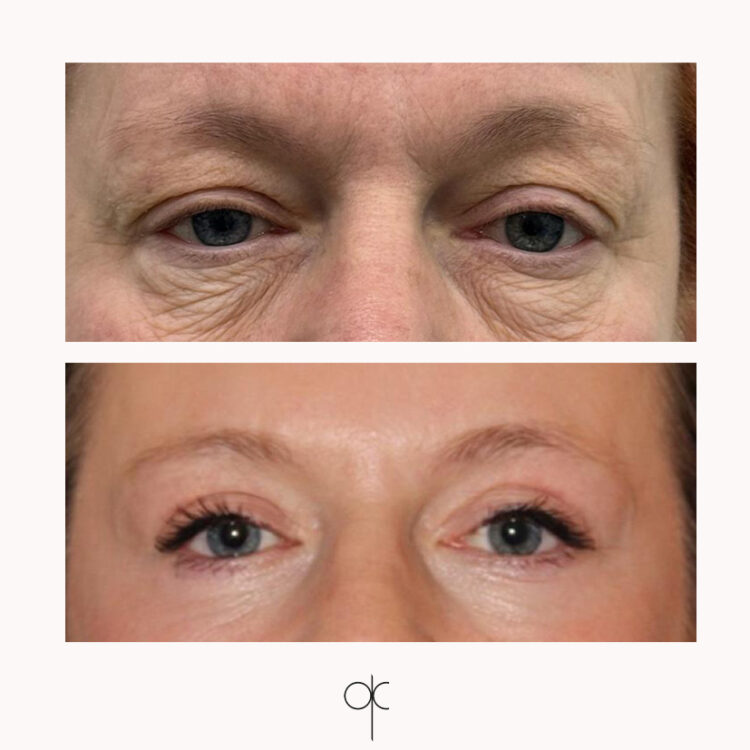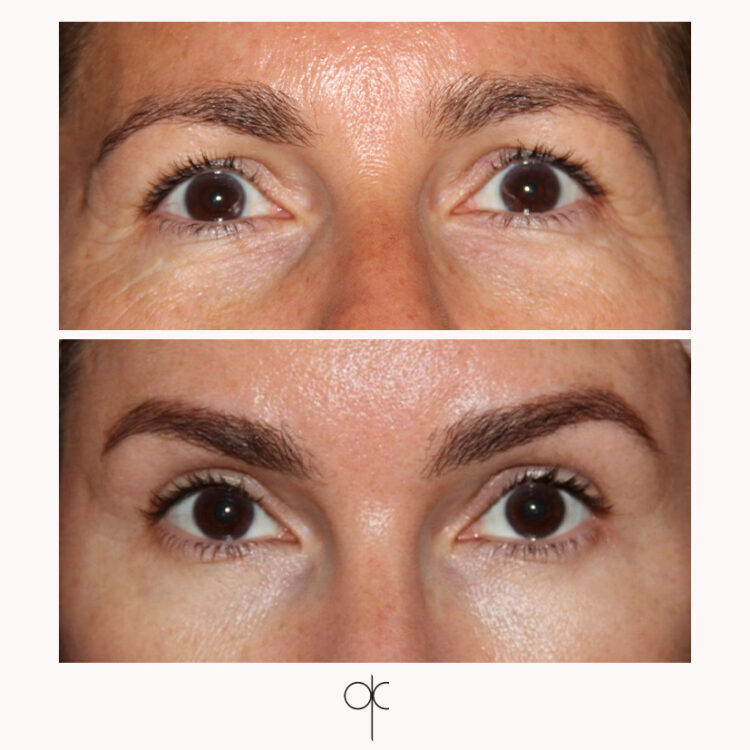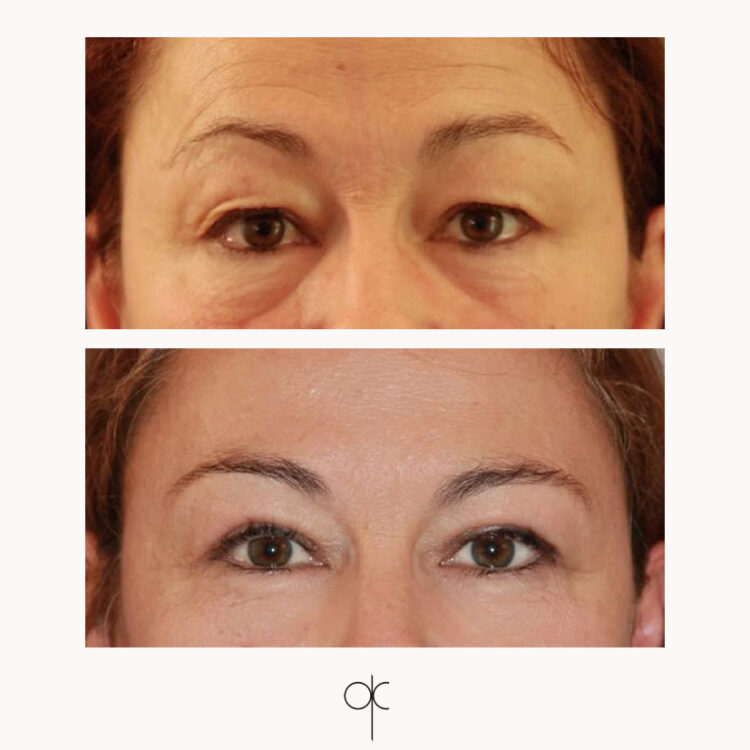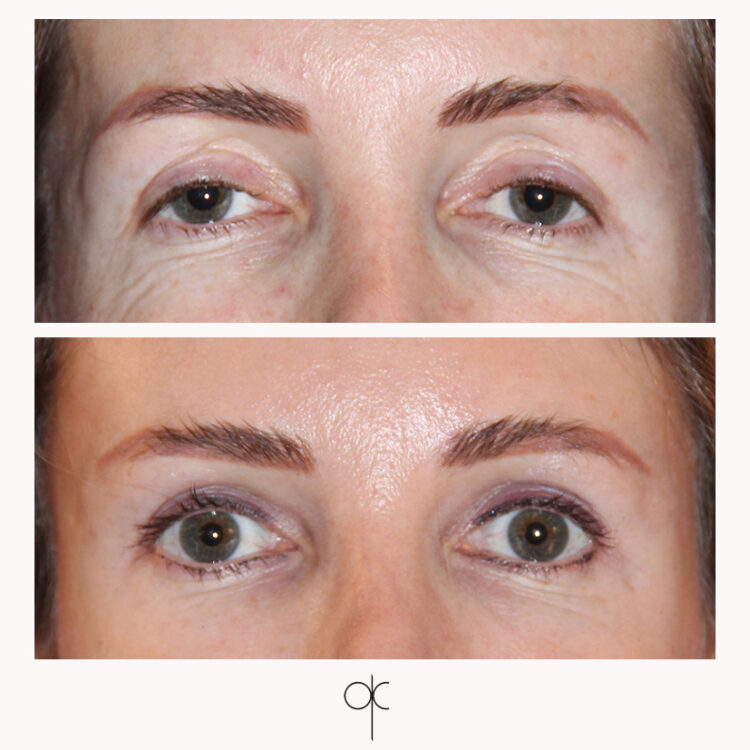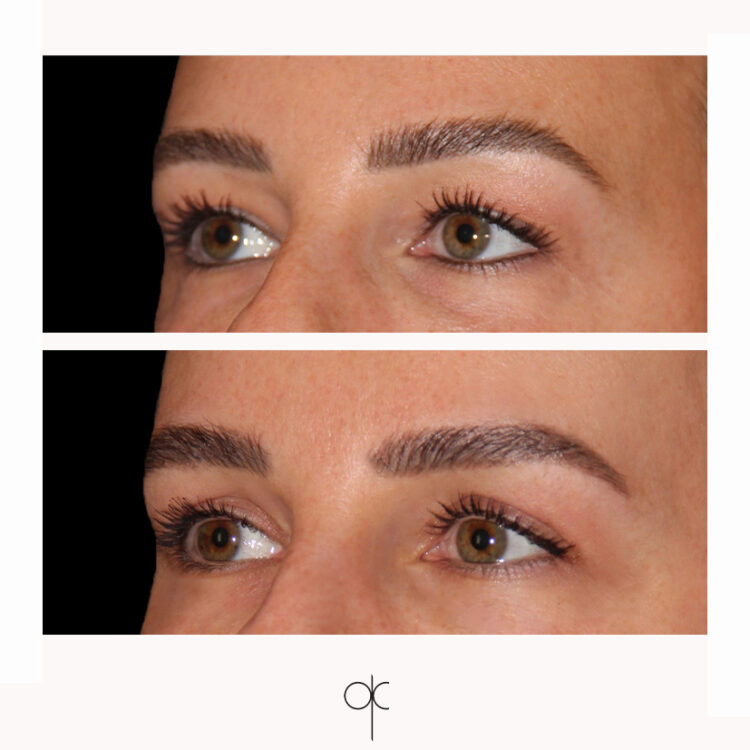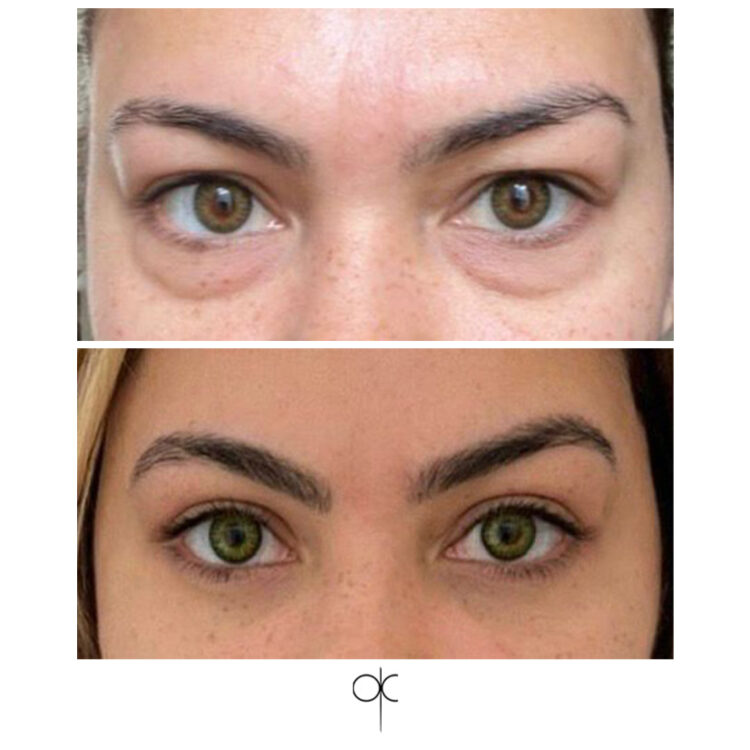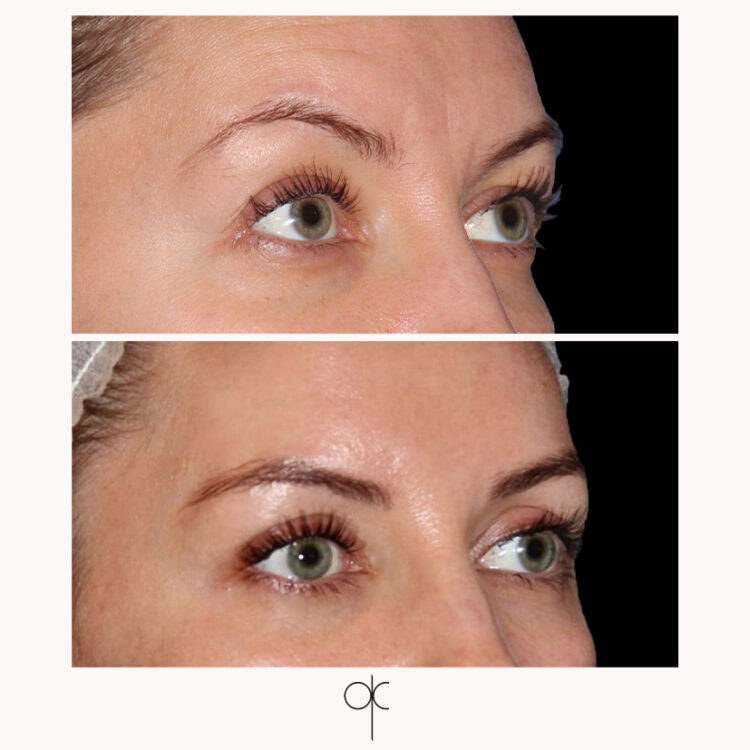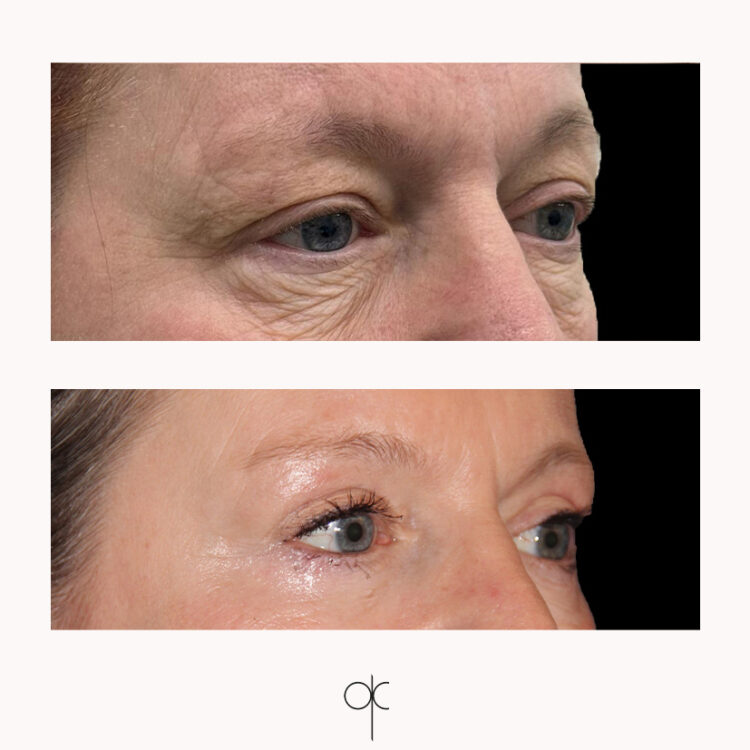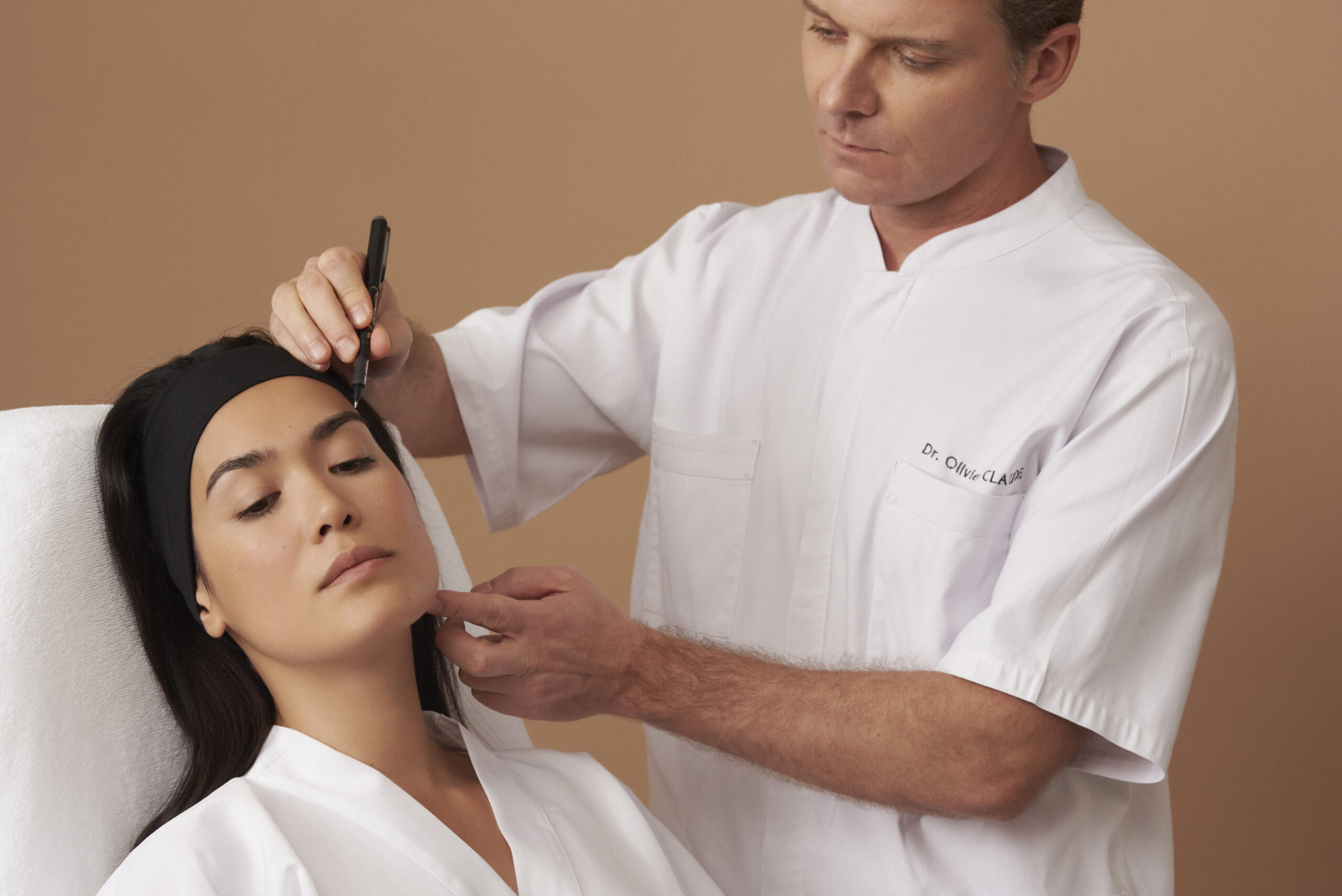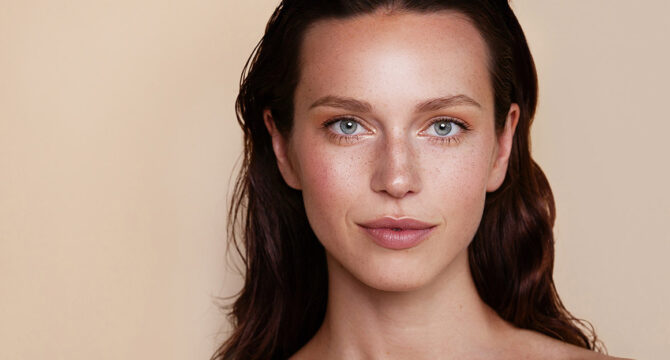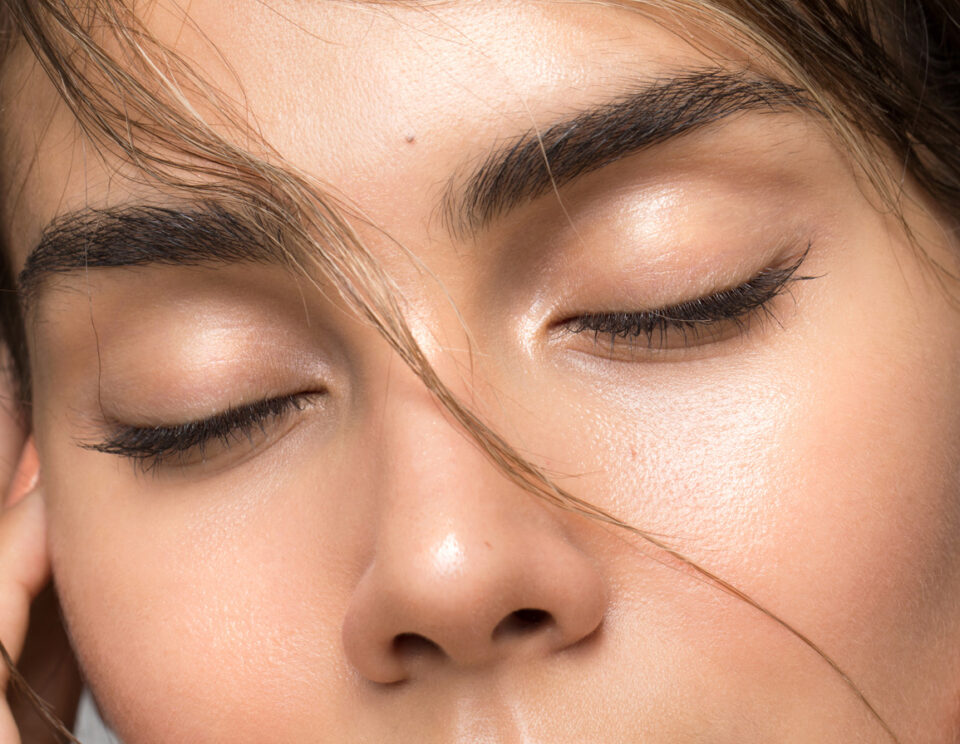
Eyelids
Blepharoplasty, or aesthetic surgery of the eyelids, is aimed at removing blemishes, whether hereditary or due to age. It may involve either the upper or lower eyelids, or all four eyelids at once.
Presentation
Blemishes treated by blepharoplasty:
- Heavy, drooping upper eyelids with excess skin.
- Sagging and withered lower eyelids, with small horizontal wrinkles.
- Fat pad herniation, responsible for the “bags under the eyes”.
- Either a pure local anaesthetic or enhanced by intravenous tranquillisers (“vigilant” sedation)
- Or a standard general anaesthetic, during which you sleep completely.
Eyelid surgery can be performed on an outpatient basis (i.e., the patient is discharged the same day). In some cases, a short stay in hospital may be preferable.
Procedure
At what age can this type of blepharoplasty be performed?
Blepharoplasty corrects eyelid imperfections in a lasting way, by removing excess skin and fatty protrusions without altering the function of the eyelids.
The operation is commonly performed from the age of forty. However, it is sometimes performed much earlier, when the blemishes are constitutional and not age-related, such as certain fat deposits.
Skin scars
- Upper eyelids: concealed in the furrow halfway up the eyelid.
- Lower eyelids: placed approximately 1 mm under the eyelashes.
For the lower eyelids, in the case of isolated “bags” (without excess skin), a transconjunctival blepharoplasty can be performed using incisions without a scar on the skin.
Resections
From these incisions, the fatty hernias are removed and the excess loose skin is eliminated. At this stage, many technical refinements can be made to suit each case.
Sutures
They are made with very fine threads which are removed after a few days.
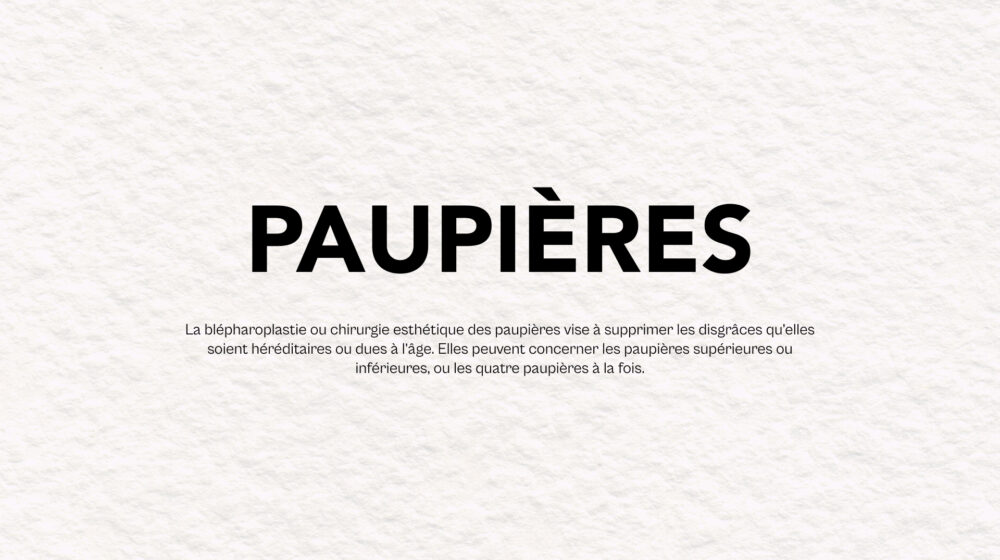
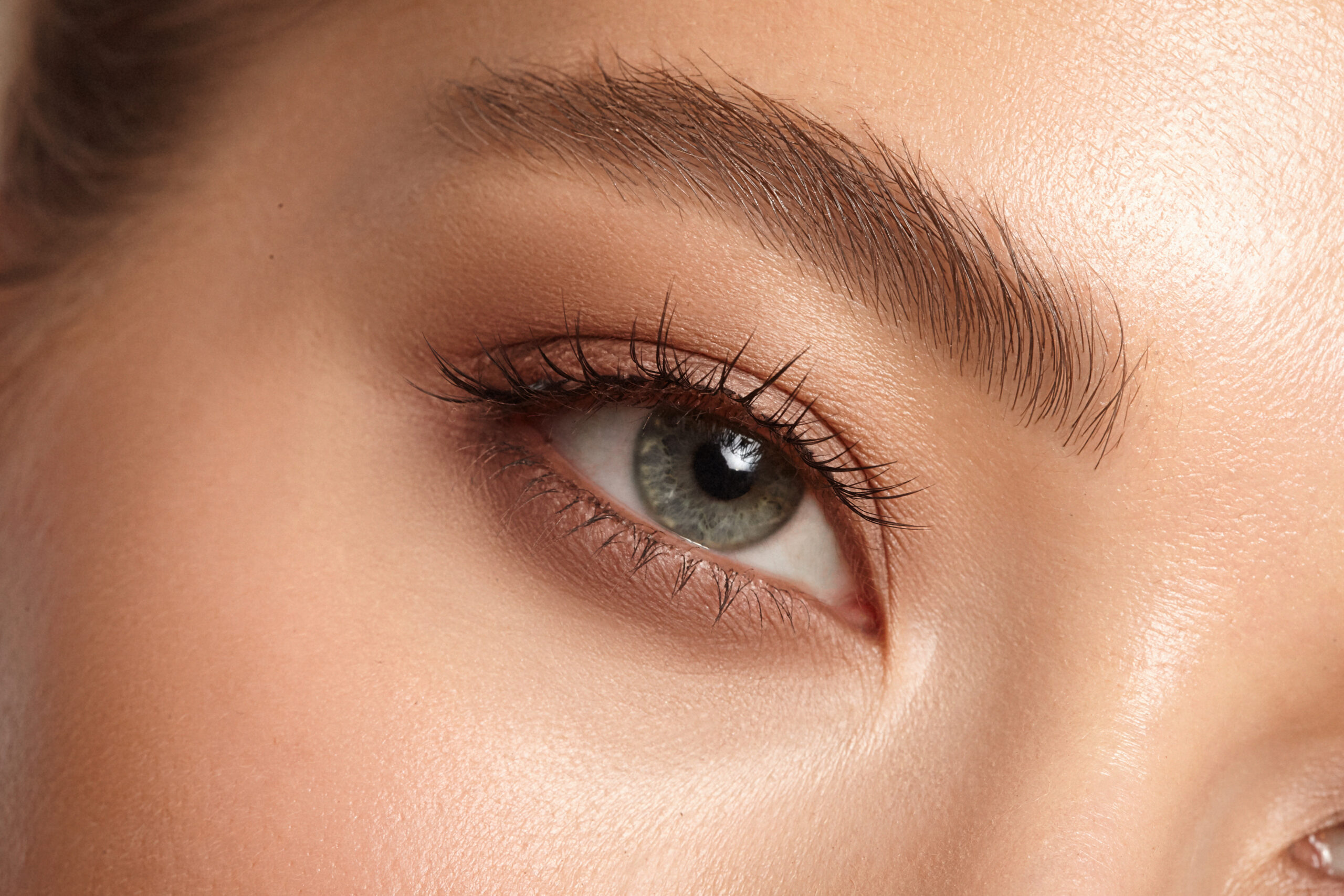
Results
What is the post-operative care following blepharoplasty?
There is no real pain after eyelid surgery, but there may be some discomfort with a feeling of eyelid tension. The post-operative period is mainly marked by the appearance of oedema and bruising, the extent and duration of which vary greatly from one individual to another.
The sutures are removed between the 4th and 8th day after the operation. The traces of a blepharoplasty gradually fade, allowing the patient to end their social and professional isolation after around ten days. Make-up is allowed from the 7th day.
Is the result definitive?
In most cases, eyelid surgery will have corrected sagging skin and eliminated fat pad herniation, thereby rectifying the eyes’ aged and tired appearance. The results of blepharoplasty are generally among the longest-lasting in aesthetic surgery.
Are there any complications?
By choosing a surgeon qualified as a Specialist in Plastic, Reconstructive and Aesthetic Surgery by the French Medical Council and graduate of a DESC (Diploma of Advanced Specialised Studies) in Plastic, Reconstructive and Aesthetic Surgery, you limit these risks as much as possible. Although exceptional, you should be aware of a blepharoplasty’s possible complications:
- Haematomas: mostly harmless.
- Infection: prevented by antibiotic eye drops.
- Scarring abnormalities: very rare in the eyelids, where the skin is very thin and usually heals almost invisibly.
